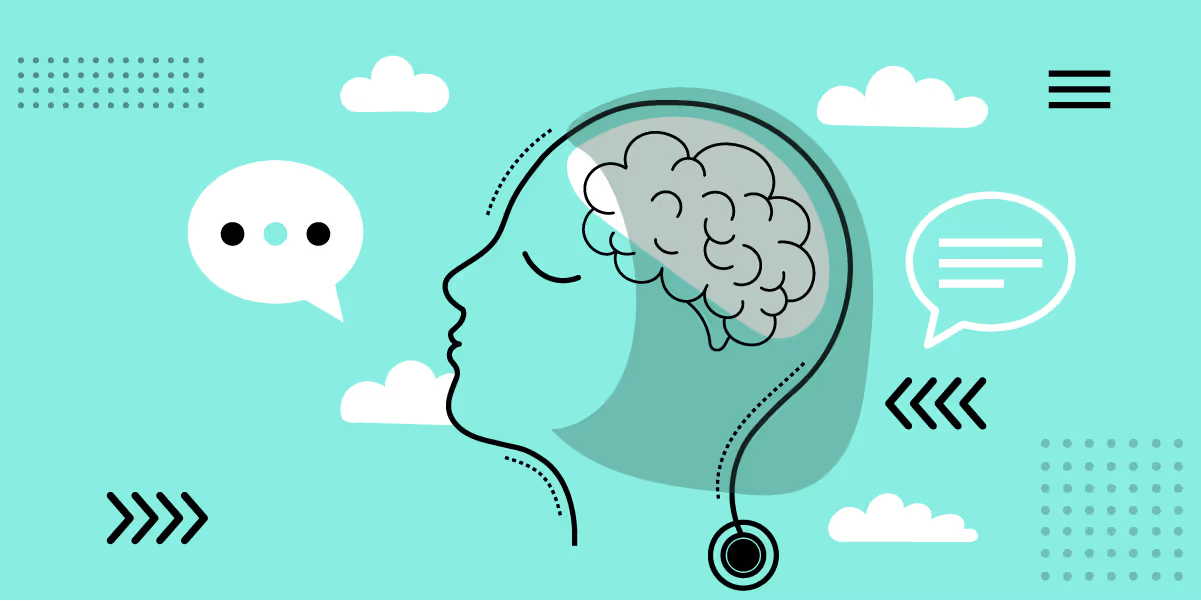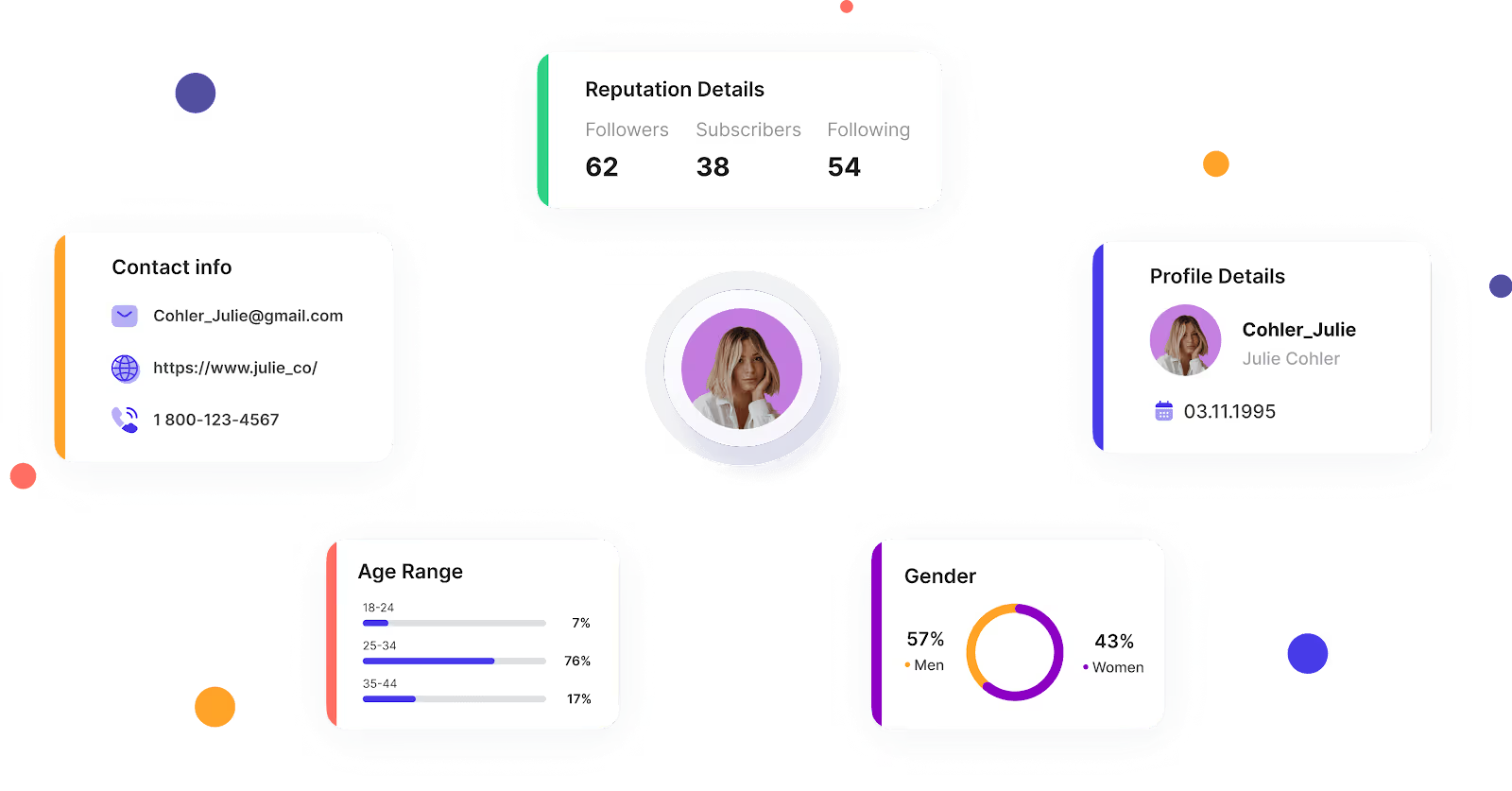In the digital age, it is not enough to know who your customers are. You also need to know what drives them to buy something. This doesn’t mean dictating your target prospect’s purpose like they did in the 1980s, by promoting kitchen appliances to women and advertising golf clubs to men. No. Today, marketers need to understand how a customer’s age and gender tie into their preferences and values. They need to work with an amalgamation of both audience demographics and psychographic data.
But why? Global digitalization has allowed consumers worldwide to have access to thousands of options at their fingertips. In such a scenario, brands which not only know what demographics their target prospects belong to, but also analyze the psychology behind their purchasing decisions automatically acquire an edge over their competitors. Psychographic data is essential to boosting awareness, increasing engagement, generating leads, and converting customers since it helps multiple brands create relevant marketing content.

However, simply creating the right kind of engaging marketing content won’t do the job. You also need to find ways to reach your ideal customers and showcase your content in front of them. In this era of social media, influencers can bridge that gap, and help you connect with their followers, who match the description of your ideal customer persona (ICP), carefully curated using both audience demographics and psychographics data.
Psychographics play a crucial role in influencer marketing and in this blog, we will understand why.
What is psychographics?
Psychographics are the key data points that describe a prospect’s behavioral and cognitive traits, revealing their opinions, values, and expectations. Psychographics are used in marketing in conjunction with demographics to analyze and create enticing offers that are informed by the purchasing behaviors of the common consumer.
Psychographics helps you refine your ideal customer persona (ICP) profiles after you build them from audience demographics information, and combined with demographic data, allows you to better segment your audience, target the right prospects, and position your product through marketing efforts, in a way that supercharges sales.

Though we segregate audience demographics and psychographics data differently, it is not always easy telling them apart. Let’s see how they are different below.
Psychographics vs. demographics
The major difference between audience demographics and psychographics data is that the former can be standardized, but the latter may vary from customer to customer and not be supported by any concrete logic.
Demographic information is objective, verifiable, and can be reduced to numbers, groupings, and Boolean (true-false) categories. SQL analytics are simple to code into spreadsheets and databases.
Psychographic data is subjective and mostly based on personality or associations. It means different things to different analysts, which is why it's so helpful. There was a time when psychographic data had to be gathered via. projective questions, much like BuzzFeed’s quizzes, asking takers, “What kind of onion are you?”
Now, we don’t think you should mimic BuzzFeed; instead, you should use a web analytics tool to uncover whatever psychographic information you can about your target prospects, by analyzing their online conversations or behaviors on your website or your social media accounts like Instagram analytics.
Here is a list of demographic and psychographic attributes:

A demographic group may be interested in a common product, but their individual attitudes and subjective opinions will drive their purchasing decisions. Thus, psychographic information covers the factors responsible for driving the buyer’s journey. It is also worth noting that a demographic group may have different psychographic segments and vice-versa. It is, therefore, always advisable to create both profiles for your prospects and customers.
In the next section, we will be studying some psychographic characteristics.
Examples of psychographic characteristics
Here are the five most common psychograhic characteristics that define the buyer’s journey:
- Personality
Personality traits impact how a person interacts with the environment around them. People in your target demographic are likely to share some personality traits that you might adapt your marketing strategy to.
For example, Apple’s minimalistic designs and efficient use of language in their ad campaigns is geared to attract the focused workaholic introvert, who values depth and authenticity over boldness and standing out.
- Lifestyle
Lifestyle psychographics describe how a person sees themselves in society. Relationships, occupation, and other major life decisions can all have an impact on this component.
For example, a brand selling organic meats may highlight the benefits of a healthier lifestyle, to customers who sign up to purchase from them, because they really want to stop binge-eating five hamburgers every Saturday night.
- Interests
This psychographic aspect has the potential to influence how a person interacts with a business. Interests differ from person to person, but the target audience will often share common interests that can be woven into marketing efforts to elicit a certain response.
For example, a brand that markets skincare could also sell sustainably-made, chemical-free and skin-friendly makeup products. This aligns with the customer’s interest in taking care of their skin, while adding the extra jazz of looking pretty.
- Habits
Habits are psychological aspects that a person has grown accustomed to in their daily lives. Because habits are difficult to break, marketers take them into account when developing campaigns and commercials.
For example, a fitness app can target those who have a habit of rising early in the morning, with their fitness routines or diets or even sell tech wearables, like a smartwatch.
- Behaviours
A behavioral psychographic element is how a person acts. Behaviors can be shown in a person's purchasing habits, product consumption, and even the frequency with which they acquire a product.
For example, Starbucks introduced the Rewards Program for its most loyal customers, who can collect points and redeem them on drinks, to affirm their positive interactions with the brand and keep selling to them throughout the year.
Now that we know about psychograohic attributes, lets see how we can find psychograoohic data.
How to find psychographic data?
Psychographic data can be gathered in the following ways:
- Focus groups and online communities
- Polls and surveys
- Social platforms
- Market research
- Third-party data collection
- Website analytics
- Customer interviews

- Focus groups and online communities
Focus groups are a gathering of people who are not usually associated with your brand, but who are invited to participate in a discussion about your brand’s products. Participants should be as unbiased as feasible and closely coincide with your target market. Focus groups are more effective when a thoughtful questionnaire is used to uncover your target audience's needs and desires.
Online communities also work similar to focus groups. You can ask questions there, for psychographic analysis, and usually, members will come up with answers you can use to refine your product marketing strategies.
- Polls and surveys
Create polls and surveys on your website (feedback questionnaires) or your social media accounts (like on your Instagram stories), and perform psychographic research at scale. You could install them as exit-intent pop-ups or a redirect “Thank You” oage after a customer makes a purchase.
- Social platforms
Social media platforms can be well-purposed to collect psychographic data. Social media like Instagram analytics generates massive amounts of qualitative data about customers' attitudes, interests, and opinions (AIOs). You may gain an organic following by posting online, manage your social media contacts, and obtain insights into your target demographic.
- Market research
Market research allows you to see your products' and services' strengths and flaws through the eyes of your customers, and it is essential for optimizing your marketing efforts before launching your new products. It also allows you to study economic factors and how they affect your sales. You can also use demographic data to better understand the motivations of various client segments.
You could employ a free market research tool such as Google Trends or SurveyMonkey when you are starting out.
- Third-party data collection
Third-party psychographic data obtained via cookies enables firms to cross-check their own data. However, before investing in third-party psychographic data providers, it is always a good idea to ensure that your organization does not hold client information in disconnected silos. Finance and marketing must share information. Logistics and shipping must follow up on sales. Customer relationship management systems require customer service input.
Cleaning up information in their own data silos is a critical first step for many brands in order to make the most of third-party data.
- Website analytics
Website analytics can provide you valuable insights about a prospect’s online behavior on your website This includes information about their clicks, their scrolls, how much time they spent on a page, whether they visited a page multiple times, where they reached before they exited the page, and much more. This mainly helps brands to optimize user experience for higher conversion rates.
- Customer interviews
Unscripted conversations with customers are an excellent technique to gather psychographic information. They assist you in going beyond age, race, and education data to grasp your clients' mindsets, principles, and needs. In this manner, you can truly comprehend their purchasing decisions. Customers are usually more than happy to help, and it helps you understand their psychology much better, which in turn, helps you create targeted marketing campaigns that resonate with your target audience.
How do psychographics work in influencer marketing?
Like we have mentioned before, cheating the relevant content wins your brand only half the battle over your competitors. You still need a reliable way to get the content to reach your target audience. This is where influencer marketing comes in.
Influence is based on trust in any given topic, not on popularity. That’s why psychographics play a huge role in the influencer marketing industry. Audiences follow creators because they choose to follow them based on values, behaviors, shared interests and so on. This is especially true for Instagram influencers who promote B2C products because most of the active audience on Instagram is Gen Z, and McKinsey reports from one of their studies that more than 70% of Gen Z will only purchase from brands that they consider ethical. The Gen Z audience likes to uphold their values, and it's very important for brands to understand this when selecting social influencers. Without marketers fully recognizing or analyzing these data points, the brand will not be able to create a marketing campaign that engages and resonates with the right people.

It functions very simply. Marketers identify the keywords in an ad campaign brief. Influencer analytics teams and influencer analysis tools are put to work to find and follow relevant micro influencers who rank for those keywords on different social media channels. The right influencer discovery helps the marketers to qualify and quantify both demographic and psychographic data and assess the influencer’s authenticity, values and engagement rates with their follower base. Once all criteria are met, the brand extends a collaboration offer, for the influencer to promote their products to their audience members, whose characteristics match that of the ideal customer personas created by the brand.
How Phyllo can help you with your influencer marketing campaign?
Phyllo is a leading influencer analysis tool that comes with its own universal API, capable of extracting creator’s data from primary platforms like YouTube, Instagram, etc. Once you get this data, you and the software team can then easily assess influencers' target audience, engagement rate, and other relevant characteristics.
Here are three Phyllo APIs that can help you get more accuracy with the influencer analysis and choose the right influencer for your brand:
- Identity API: This API assists you in verifying the identity of an influencer. You can learn their name, contact information, subscriber or follower growth trends, and opinions. Furthermore, you can quickly access their audience demographic and find influencers who share your audience base.

- Engagement API: This API will assist you in analysing your influencer marketing initiatives by providing key metrics such as engagement rate. You may also determine which posts have the best engagement and ROI. You can improve your influencer marketing strategy based on these findings.

- Income API: This API can provide information about an influencer's income level. It makes data about creators and their income streams available on several platforms. It's useful for determining whether a particular influencer is within your budget.

Create successful influencer marketing campaigns and promote your products to your ideal prospects, utilizing the powers of Phyllo’s influencer analytics tool. Sign up for immediate access today!
FAQs:
How do you analyze an influencer’s audience?
To determine the interests and behaviors of an influencer's audience and analyze why they engage with the content the influencer creates, gather data on their demographics, and psychographics, utilizing social media analytics tools and surveys.
How do you find influencer audience demographics?
You can use platforms like Smartfluence provide influencer demographics checker tools for free, or influencer analysis tools like Phyllo that offers API integrations to extract demographic data about an influencer’s followers, like age, gender, occupation, location, etc. from their social media account.
What is psychographics in influencer marketing?
Psychographics in influencer marketing is the study of the personality, values, beliefs, habits, interests, and behaviors of the followers making up the majority of an influencer’s audience base, to target and personalize brand content and messaging for maximum engagement and conversion.
How does psychographics work in influencer marketing?
Marketers search for influencers ranking for the keywords in their campaign briefs, manually or using influencer marketing platforms. Next, they analyze each influencer reports for psychograohic characteristics, like personality, values, interests, habits, behavior, etc. Once they find an influencer whose followers match the description of the brands ideal customer personas (ICPs), the brand partners with the influencer in a mutually profitable way, to increase their sales with the creator’s influence.

.avif)







